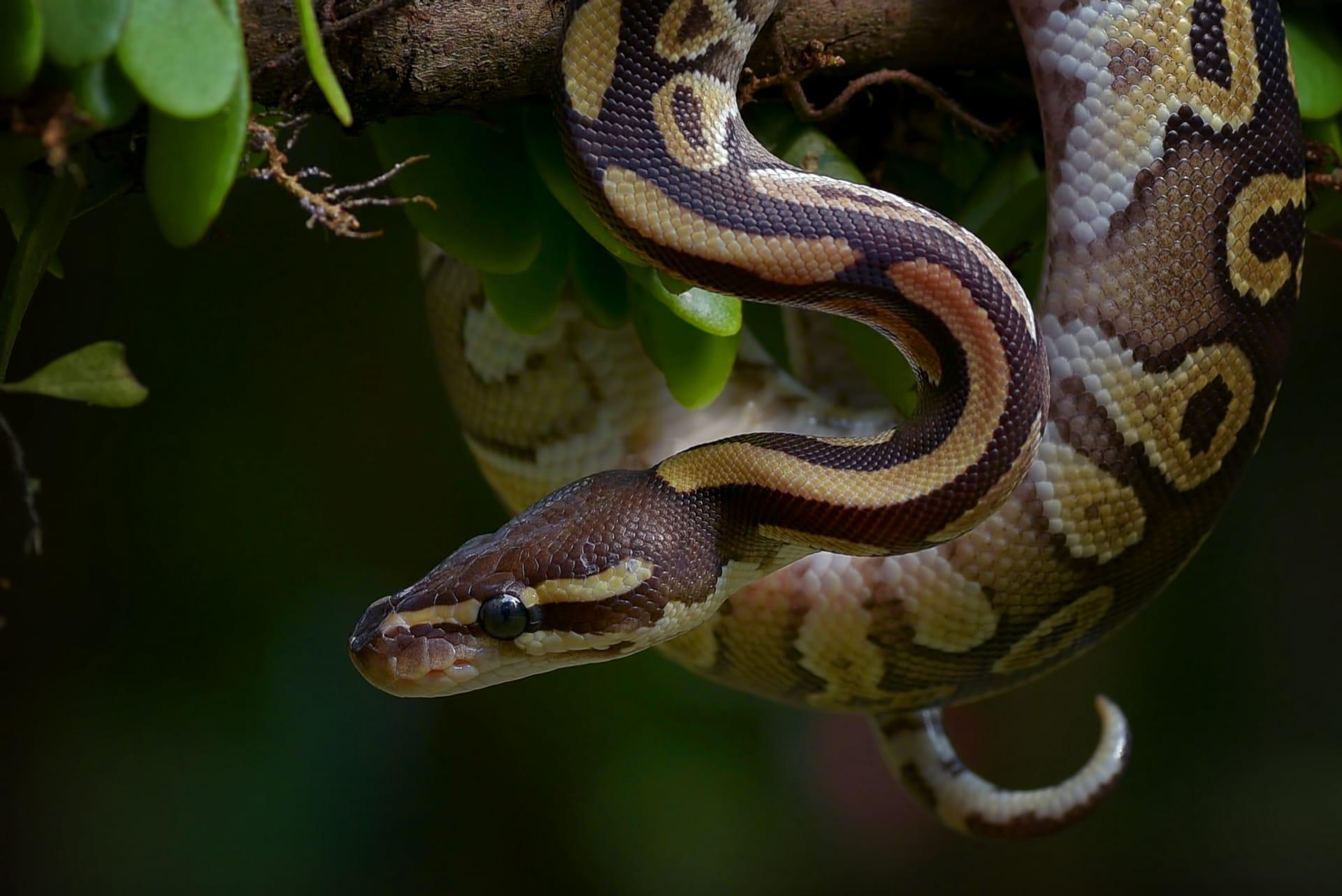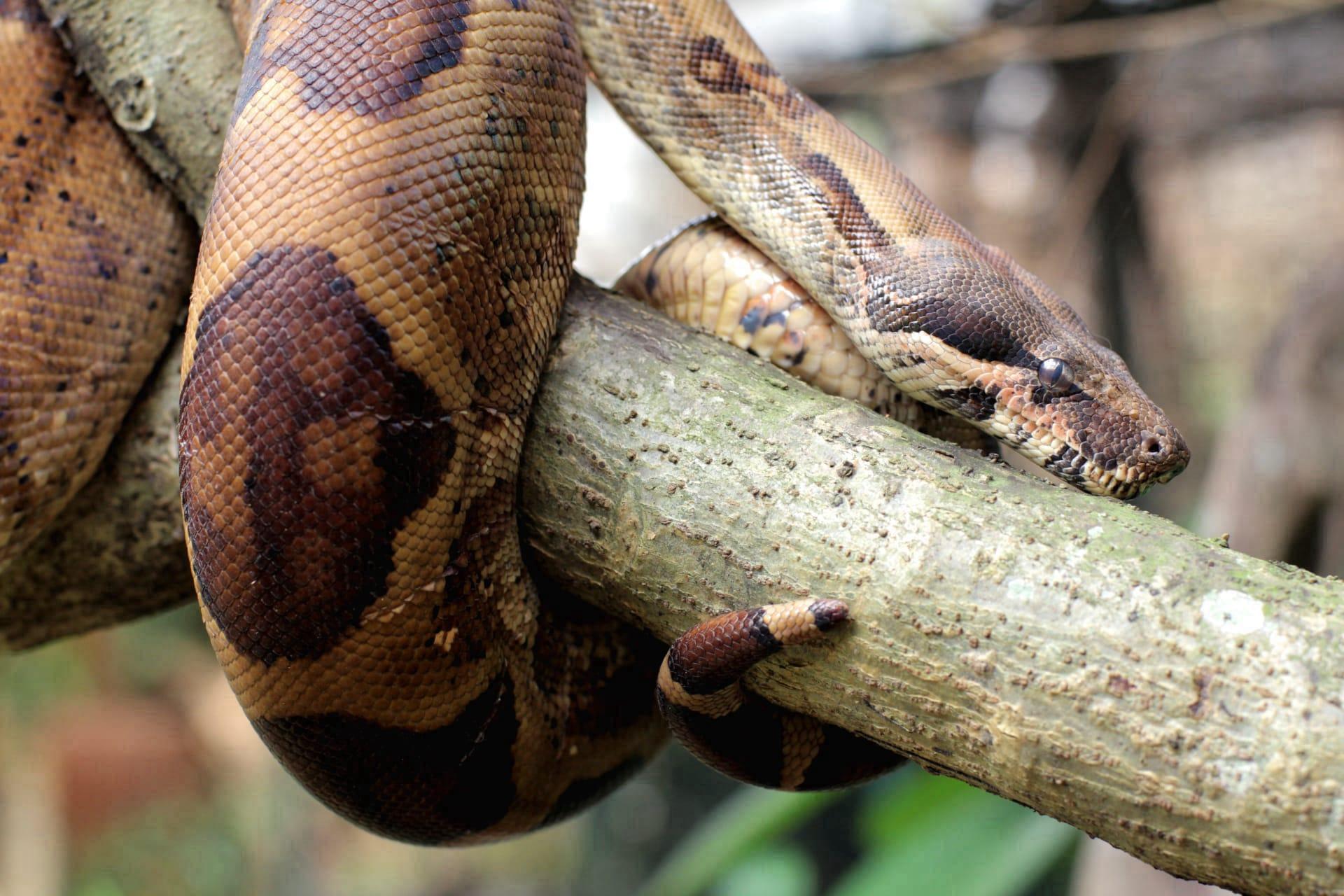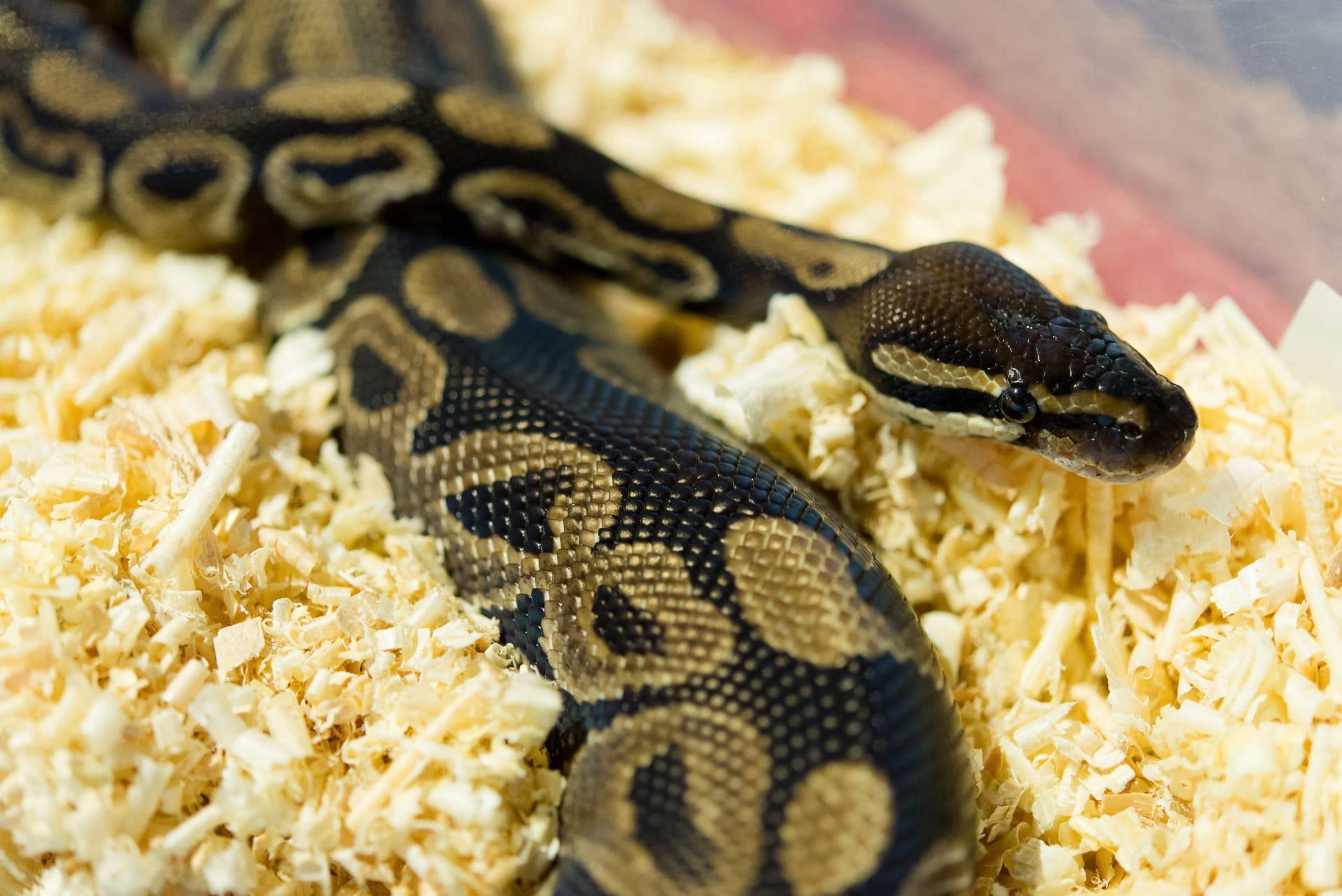1
Did you know that the Burmese python, one of the largest snakes in the world, can reach a staggering length of up to 23 feet? That's as long as a small bus! These giants are not just lengthy but also heavy, with some tipping the scales at nearly 200 pounds. Imagine a snake that weighs as much as an adult human!
Burmese pythons are also exceptional swimmers. They can stay submerged for up to 30 minutes before needing to surface for air. This ability isn't just for fun; it's a key survival tactic in their native habitats, which include marshes, rivers, and swamps in Southeast Asia. When swimming, only their eyes and nostrils peek out of the water, making them nearly invisible to prey.

2
Another remarkable aspect of Burmese pythons is their reproduction. A female can lay up to 100 eggs at a time! She carefully wraps herself around them, generating heat through muscle contractions to maintain a temperature of around 88 to 90 degrees Fahrenheit. This maternal care ensures the eggs stay warm and safe from predators for the two to three months it takes to hatch.
These pythons also have a unique way of sensing their environment. They possess special organs in their lips, called 'pit organs', which detect heat from nearby animals. This thermal sensing is so precise that a Burmese python can detect a change in temperature as small as 0.003 degrees Fahrenheit. It's like having a built-in thermal camera, allowing them to be excellent nocturnal hunters.

3
Did you ever wonder how a snake without ears can be an effective hunter? Burmese pythons have an extraordinary ability to detect vibrations. This means they can 'hear' in a way, by sensing movement through the ground. So, even without traditional ears, they are keenly aware of their surroundings and potential prey, or threats, nearby.
Their diet is as impressive as their size. Burmese pythons are known to eat a variety of animals, including birds, mammals, and even other reptiles. Large pythons can take down sizeable prey like deer and pigs. They are constrictors, which means they wrap their powerful bodies around their prey and squeeze until the animal can no longer breathe, a method both efficient and effective in the wild.

4
Burmese pythons also play a significant role in their ecosystems. As apex predators, they help control the populations of their prey, thus maintaining a balance in nature. However, in areas where they are introduced, like the Florida Everglades, they can become invasive and disrupt local wildlife, causing ecological challenges.
Interestingly, Burmese pythons exhibit a variety of colors and patterns, which is why they are popular in the pet trade. Their skin shows intricate patterns of brown, green, and tan, which provides excellent camouflage in their natural habitats. This camouflage helps them blend seamlessly into the forest floor, making them nearly invisible to both prey and predators.

5
Despite their fearsome reputation, Burmese pythons are quite shy and reclusive. They prefer to avoid confrontation with humans and will typically retreat if given the opportunity. However, their size and strength should always be respected, and interactions with wild pythons should be left to experienced professionals.
Finally, the lifespan of a Burmese python in the wild is around 20 to 25 years, but in captivity, they can live up to 30 years. This longevity, combined with their fascinating characteristics, makes them a subject of continuous study and interest in both the scientific community and the public. Their survival, however, is threatened by habitat loss, poaching, and the pet trade, emphasizing the need for conservation efforts to protect these magnificent creatures.